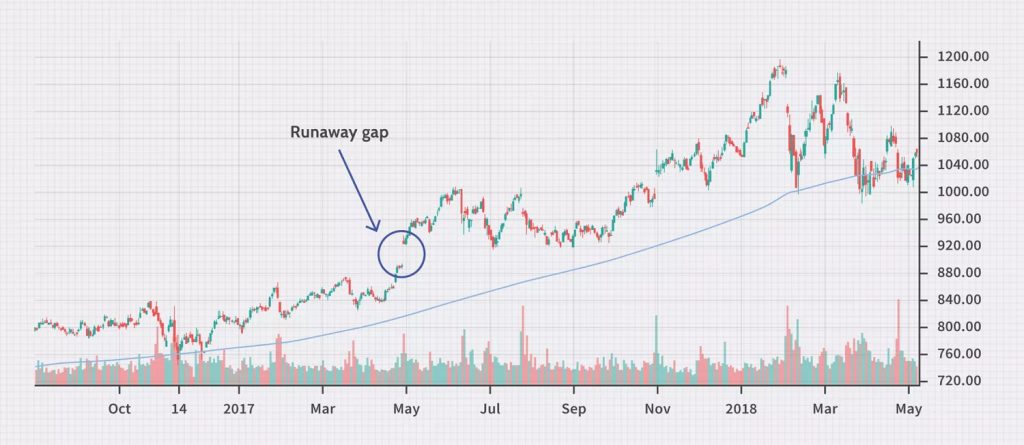Table of Contents

When there is a price difference between the two consecutive days’ high and low a Gap is caused in the charts. Gaps are of two types: –
-
A positive gap or bullish gap or plus gap
-
A negative gap or a bearish gap or a minus gap.
If today’s low is higher than yesterday’s high it is a positive gap or a plus gap. A positive gap indicates the strength of the upward journey.
If today’s high is lower than the yesterday’s low, it is a negative gap or a minus gap or a bearish gap. A negative gap indicates the strength of a downward journey.
Any news or information that which comes after the market is closed, influences the traders, causing them to be either over optimistic or over pessimistic, resulting in creation of either excessive demand or supply and accordingly a gap occurs. In a word a gap is caused due to sudden change in the mood of the traders. All the gaps may or may not get filled up. Normally there is a tendency on the part of the price to fill up the gaps. We must note that, a gap denotes the strength of the movement.
According to the place of occurrence gap has been classified in to four parts.
-
Common Area Gap:-
This gap occurs when the market is in a choppy trend. This gaps generally get quickly filled up. This gap occurs due to unnecessary enthusiasm on the part of the traders. There is no technical importance of these gaps.
-
Break out Gap: –
A break out gap occurs when the price comes out of a confinement or a bondage (ie, choppy trend) normally it must be accompanied by a higher volume. A breakout could be of two types, (i) With the gap and (ii) Without the gap. Needless to say, that the break out with the gap is of more importance a break out gap denotes that either section of the traders has taken a decisive control of the market.
-
Run Away or measuring gap: –
Any gap which occurs after the break out gap (may be, may not be) is called run away gap. A run-away gap is an indication of further strength ahead. It tells us that still there is fuel let for journey. We must note that there could be more than one run away gap in the particular direction. As a matter of fact, run away gaps do not get quickly filled up. It is also known as measuring gap because it can measure the possible target of the next movement. Once we have a run-away gap, we have to measure the distance between the starting point of the journey and the runway gap and project the equal distance from that point to get the possible target. There is no hard and fast rule that this target has to be achieved in the most accurate manner, a better strategy is to apply a 10% variation in the small caps stock and 5% in the mid or large cap stock. We have to repeat this process of measurement in the same manner as run away gaps keep in occurring . One should be a bit alert after the occurrence of 3 run away gaps. Any run-away gaps getting filled up within 3 consecutive trading session has to be considered as an exhortation gap. Apparently, an exhaustion gap is supposed to be the end of the journey of movement. In a subsequent trading session, we must watch if the immediate high is challenged or not. If it is noticed that having formed an exhaustion gap price test the immediate top and faces resistance most likely it is a top, even if for the short term.